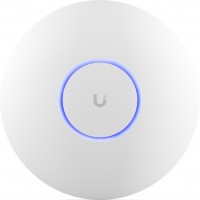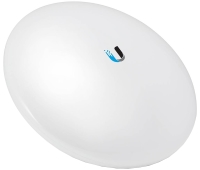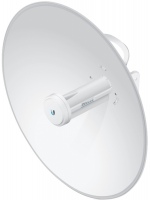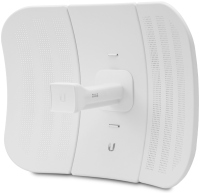Wi-Fi Equipment Ubiquiti series NanoStation (for bridges, short range)
Ubiquiti NanoStation
The NanoStation product line from the American brand Ubiquiti includes medium-range access points designed for outdoor installation. These are highly specialized devices needed to create high-quality Wi-Fi coverage in large and open spaces of several kilometers or even several tens of kilometers. For example, to create a seamless coverage at a music festival or to organize a video surveillance system at an industrial facility outside the city. In addition, NanoStation access points can play the role of a bridge or a long-range repeater.
 |
A typical representative of the NanoStation series is a compact device for data transmission in Wi-Fi 4/5 networks, which is dressed in a seamless housing for weather protection. It is equipped with several long-range antennas and a transmitter with a power of 23 to 28 dBm, thanks to which the signal transmission distance in the open air can reach 15 km. The input channel power is usually limited to 100 Mbps. To simplify installation, power is transmitted directly through the LAN port using Power-over-Ethernet technology. In addition, many NanoStation devices support the 2x2 MIMO standard and Ubiquiti's proprietary AirMax protocol, which optimizes the distribution of data packets, thereby increasing the quality and stability of the connection.
In the assortment of the Nanostation series, you can find about ten models that are quite similar in their functionality, the difference between which lies in small technical nuances. So models with a deuce in the name (for example, NanoStation M2) are designed to operate in the 2.4 GHz frequency range. Well, versions with the number "5" in the title were created with an eye on the frequency of 5 Hz. In turn, NanoStation and NanoStation Loco access points differ in the number of antennas, input ports and range. NanoStation usually has 2 LAN ports, 4 antennas and an average range of around 15 km, NanoStation Loco has only 1 port, 2 antennas and a range of no more than 5 km. That is, Loco models can be safely called simplified.







